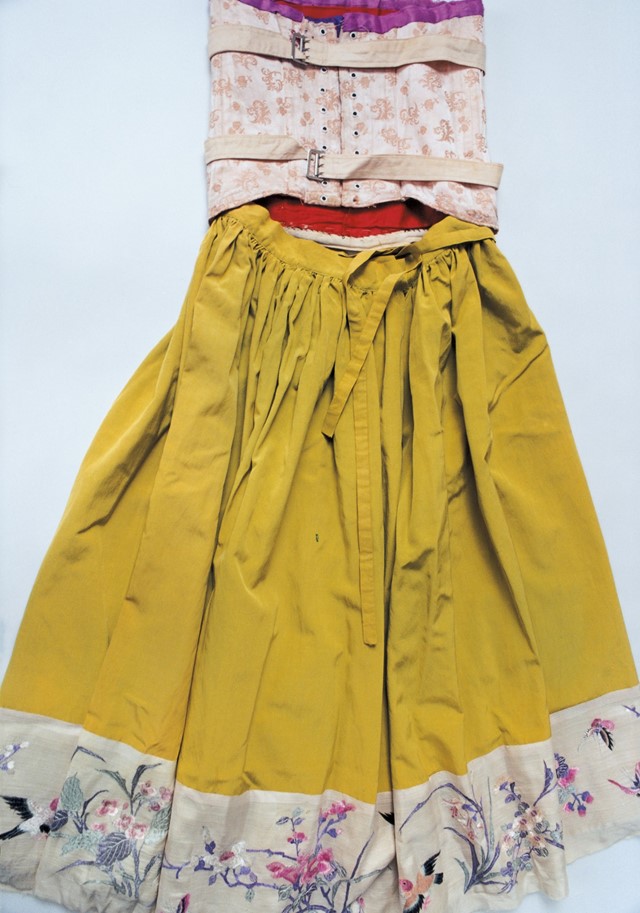The artist's wardrobe and world is brought to strange and poignant life in Ishiuchi Miyako’s photographs, first seen in AnOther Magazine S/S15
“If I met her, I wouldn’t ask any questions. I would only want to stare at her and touch her body.” Japanese photographer Ishiuchi Miyako is talking about Frida Kahlo, the subject of her latest body of work. Self-taught Ishiuchi Miyako has been creating powerful and beautiful collections of photographs since the late 1970s, many of them concerned with the passing of time, and last year received the prestigious Hasselblad Foundation International Award in Photography. In her series Mother’s (2000-05), she photographed the personal articles of her late mother, and in 2007, documented the clothing and personal items of victims of the devastating atomic bombing of Hiroshima. Her training in textile design means that she is appreciative of the delicate subtleties of the forms, structures, colours and fibres of the garments she photographs, and also manages to delicately handle the cultural and personal stories woven into them. “She is not somebody who makes decorative pictures,” says gallerist Michael Hoppen, who is hosting an exhibition of her Frida series at his eponymous London gallery, opening in May. “She’s somebody who really does live and breathe her particular stance on life.”

In 2011, Ishiuchi Miyako was given a unique opportunity to photograph Frida Kahlo’s wardobe and personal objects, at Kahlo’s Blue House in Mexico City. It would be the first time her subject matter had not derived from Japan. She travelled to Mexico City, a frenetic, bustling contrast to her ordered homeland, and began to photograph over 300 of the well-preserved objects at the Blue House, the place where Kahlo was born, worked and died. The wardrobe was only discovered in 2004, having been hidden in a tiny, spare bathroom under the instruction of her husband Diego Rivera.

“Frida always receives attention for her extraordinary aspects, but coming into contact with her ordinary side greatly sparked my imagination and inspired me,” Ishiuchi Miyako says. Some of the pieces are familiar from Kahlo’s self-portraits – the traditional Tehuana dresses and her hoop earrings, decorated with birds. Others are more personal – a half-used bottle of perfume, and a comb, still strung with strands of Kahlo’s hair. Others are a vivid reminder of Kahlo’s longstanding pain and strength. “The form of her shoes shows that Frida accepted the physical scars she had been burdened with all of her life and changed them from something negative into something positive,” she furthers. We are so familiar with Kahlo – through her work, her home, her diary writings and letters. Yet through her unique eye, we experience a new, intimate and tender moment with Kahlo. So close, one can almost smell her. One powerful female artist documenting another.
Frida by Ishiuchi Miyako is at Michael Hoppen Gallery from May 14 to July 12. This story first appeared in AnOther Magazine S/S15, out now.

Follow AnOther's Frida Kahlo board on Pinterest






